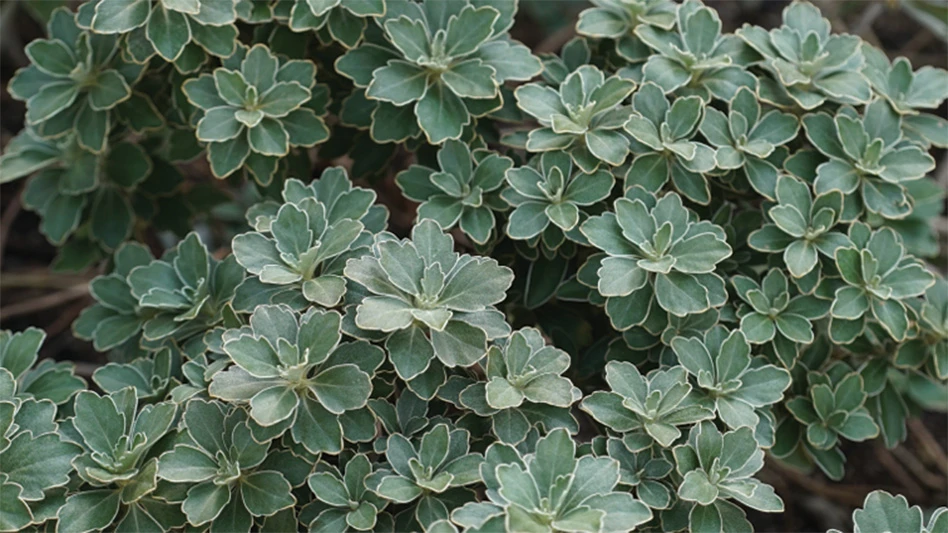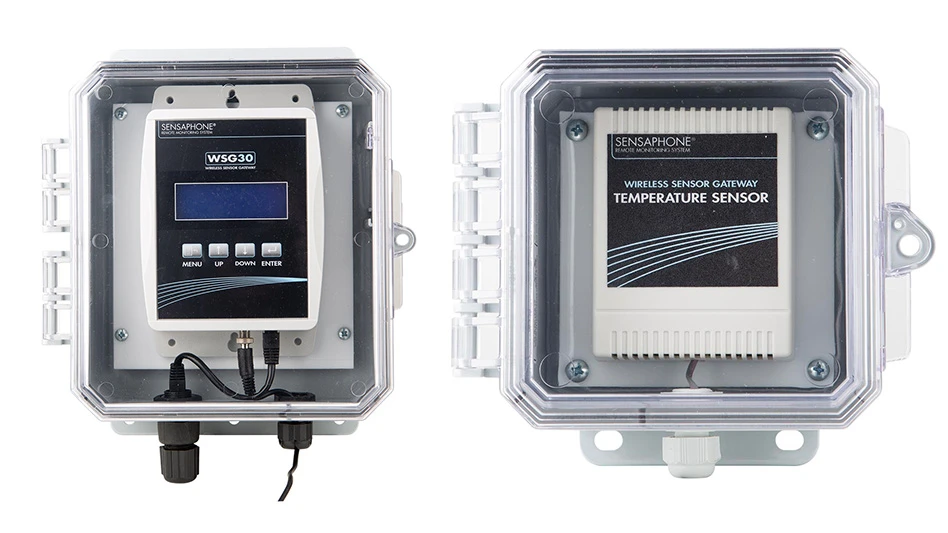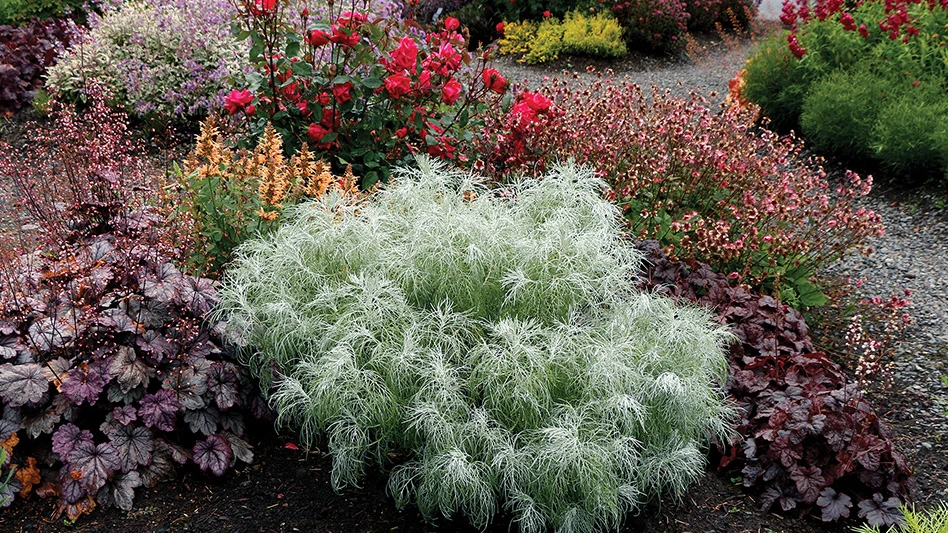This is part three of a three-part series on water efficiency. If you missed the first two parts of this series, see part one at http://bit.ly/18Nk1fy and part two at http://bit.ly/15PqWZz.
 Water availability and efficient application are the most common operational concerns related to water, but water quality, a factor foundational to crop health, is often overlooked. For instance, how often in the last two years have you monitored the pH and/or soluble salt levels in your irrigation water to determine if you are still irrigating, fertilizing, or amending your container substrate correctly? Are your pH and electrical conductivity (EC) values in a “safe” range to promote growth and optimize mineral nutrient availability (download “How to Interpret A Water Quality Report” at http://tinyurl.com/interpret-water-quality)? Many of the problems associated with slow plant growth or unsightly foliage are directly related to the quality of the irrigation water used. When you develop a baseline water quality from which to work, you can plan a successful production schedule with regard to plant species, fertilization requirements, irrigation volumes, and time to market. Without monitoring and managing water quality, there is a potential for increased “shrinkage” (i.e. product loss during production) and increased production time resulting in decreased profitability. Knowledge is the best tool to improve operational efficiency as related to water quality.
Water availability and efficient application are the most common operational concerns related to water, but water quality, a factor foundational to crop health, is often overlooked. For instance, how often in the last two years have you monitored the pH and/or soluble salt levels in your irrigation water to determine if you are still irrigating, fertilizing, or amending your container substrate correctly? Are your pH and electrical conductivity (EC) values in a “safe” range to promote growth and optimize mineral nutrient availability (download “How to Interpret A Water Quality Report” at http://tinyurl.com/interpret-water-quality)? Many of the problems associated with slow plant growth or unsightly foliage are directly related to the quality of the irrigation water used. When you develop a baseline water quality from which to work, you can plan a successful production schedule with regard to plant species, fertilization requirements, irrigation volumes, and time to market. Without monitoring and managing water quality, there is a potential for increased “shrinkage” (i.e. product loss during production) and increased production time resulting in decreased profitability. Knowledge is the best tool to improve operational efficiency as related to water quality.
To gain a better understanding of a variety of water-related issues, a survey of 388 nursery and greenhouse growers throughout the United States was conducted in 2012. When we asked growers if they monitored water quality, the majority of respondents did not (45–80 percent), regardless of water source from which water was drawn.
Another layer of complexity related to water quality is that of biotic and chemical contaminants. Biotic (e.g. pathogen, algal, bacterial, or viral) and chemical (e.g. nutrients, growth regulators, pesticides, or suspended solids) contaminants can impact plant health, and reduce productivity if poor quality water is recycled without treatment.
Water conservation is becoming more critical as drought cycles increase and urban populations grow, creating a greater demand for limited water resources in many regions. Thus, alternative water sources, including recycled (reuse of production area irrigation runoff) and reclaimed (treated municipal wastewater), may be needed to maintain adequate water resources for crop production. The prevalence of chemical and biological contaminants in alterative water resources could impact plant quality and growth rates.
Of the 23 percent of respondents, from the national survey mentioned above, who monitored water quality in a containment pond, only 48 percent monitored at least one parameter at least once a season, 23 percent monitored one parameter on a monthly basis, and 29 percent monitored at least one water quality indicator on a weekly basis. The most common parameters that were monitored included: pH (88 percent), EC (63 percent), alkalinity (50 percent), nutrients (44 percent), suspended solids (31 percent), pathogens (19 percent), and pesticides (6 percent).
Know your pH
Monitoring water pH is critical because it often shifts over a growing season or even within a single day, depending upon water source. Within containment ponds, water pH can shift from 6.0 in early morning to greater than 10.0 by late afternoon. When algae photosynthesize during the day, they fix CO2, which raises the pH of pond water by increasing the concentration of hydroxide ions in solution.
 Shifts in pH are more prevalent at the surface of the water and are therefore reduced when irrigation pump intakes are placed at the proper depth, two to three feet from the bottom of the pond.
Shifts in pH are more prevalent at the surface of the water and are therefore reduced when irrigation pump intakes are placed at the proper depth, two to three feet from the bottom of the pond.
Use of water with a pH > 7.5 for irrigation or pesticide application could decrease nutrient uptake by plants or promote alkaline hydrolysis of some pesticides, respectively. Alkaline hydrolysis is a chemical reaction that degrades the active ingredient of some pesticides within a short period of time (~1 hour).
Monitoring and managing the pH and alkalinity of irrigation water (e.g. acid injection) is a critical strategy for successful crop production, as fertilizer, substrate, and pesticide efficacy can all be reduced if proper pH is not maintained.
Monitor EC
Monitoring the EC of your water source, especially if production runoff is recycled, could save you money, as you could reduce current fertilization rates by reusing nutrients that are typically lost if irrigation runoff is not captured and reused. If EC is used as a proxy for the relative levels of salts in recycled water, periodic sampling and analysis (e.g. monthly) for presence of beneficial salts (N, P and K) and salts contributing to phytotoxicity (Na, Cl, or B) should be scheduled. With this information, a blending plan can be developed to determine the proper ratio of “clean” and recycled water to minimize potential detrimental impacts on crop growth.
Alternative methods
In general, most growers have a zero tolerance policy for pathogens and chemically treat water to ensure complete kill. Recent research has shown that some of the most effective methods for reducing pathogen loads have nothing to do with chemical control. The depth of pump intake and maximizing the distance between runoff return and pump intake are critical factors that limit reintroduction of pathogens to production areas. Another mechanism to determine which, if any, phytopathogens are present in your irrigation water is to monitor for their presence via baiting. Your extension specialist or plant pathologist can help you develop a monitoring plan that will adequately address risks posed from water reuse.

Sample for pesticides
Pesticide contaminants are of concern as pesticide residues might persist in containment ponds and/or cisterns receiving runoff from production areas or may be present in surface waters from operations up stream that apply pesticides. Occasionally, pesticide residues have resulted in widespread phytotoxicity to crops.
 If reapplication of pesticide residues is a concern, representative sample(s) should be collected directly from the irrigation nozzle at pre-determined intervals during a series of irrigation events following a pesticide application to determine if residues are present, and their concentrations.
If reapplication of pesticide residues is a concern, representative sample(s) should be collected directly from the irrigation nozzle at pre-determined intervals during a series of irrigation events following a pesticide application to determine if residues are present, and their concentrations.
It is recommended that you work with your state extension specialist to develop a sampling plan because sampling for pesticides is more costly and requires specific handling procedures.
Water is a major component of successful greenhouse production, and growers should continue to strive for maximum efficiency. Begin changing your production practices now: monitor irrigation efficiency, monitor water quality, and develop a plan to implement remediation or containment ponds. Learn about treatment options available to manage water quality issues. If you implement changes now, you might be surprised how your economic bottom-line improves as you put these factors into practice.
Sarah White is assistant professor and water quality extension specialist at Clemson University, swhite4@clemson.edu. Jim Owen is assistant professor and nursery crops extension specialist at Virginia Tech, jim.owen@vt.edu. John Majsztrik is a post-doctoral researcher at the University of Maryland, jcmajsz@umd.edu. John Lea-Cox is a professor and nursery research extension specialist at the University of Maryland, jlc@umd.edu.

Explore the October 2013 Issue
Check out more from this issue and find your next story to read.
Latest from Greenhouse Management
- Meet the All-America Selections AAS winners for 2025
- AmericanHort accepting applications for HortScholars program at Cultivate'25
- A strong foundation
- BioWorks hires Curt Granger as business development manager for specialty agriculture
- 2025 Farwest Show booth applications now open
- Applications open for Horticultural Research Institute Leadership Academy Class of 2026
- Bug budget boom
- Don’t overlook the label





